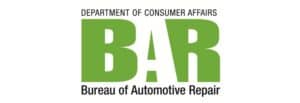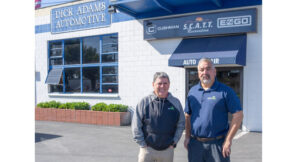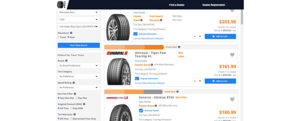Californians may soon be riding on tires that require the consumption of as little fuel as possible — performance, durability, price, and, most importantly, safety be damned!
There is a quote of unknown origin that states, “If you are not at the table, you are on the menu.” The reference pertains to advocacy, and means that if you do not have a seat at the decision-making table, you are likely to be left vulnerable. The positive news is that the tire industry has a seat at the table in the California Energy Commission (CEC)’s low rolling resistance tire standard development process.
The CEC, created in 1974 as the “Energy Resources Conservation and Development Commission,” is the primary energy policy and planning agency for California.

In the nearly 50 years since its inception, the CEC has developed the California Building Energy Efficiency Standards, Appliance Efficiency Standards, solar programs, and a wide array of other programs and activities focused on conserving energy and natural resources in California.
The programs and regulations promulgated by the CEC have had little to no impact and essentially been irrelevant to the operations of California’s tire dealer — until now.
The Commission is in the early stages of developing low rolling resistance tire standards aimed at reducing the fuel use of vehicles on California’s roads. While most consumers are supportive of the intent to improve energy efficiency and reduce reliance on fossil fuels, history has shown that government involvement almost always leads to significantly increased costs and decreased consumer choices.
California’s expensive housing is an excellent case in point. While many factors contribute to the high cost of housing in California, it is hard to dispute the argument that excessive regulations contribute mightily to the state’s housing affordability problems.
High-efficiency heating and cooling systems, energy-efficient windows, “solar ready” roofs, and mandatory residential fire sprinkler systems (not an energy conservation standard, but a California building code requirement, nonetheless) are examples of the building code requirements driving up the cost of housing in California.
On top of that, there is a proposal before the California legislature aiming to make residential roofs so highly reflective (in the name of energy savings) that all new and replaced residential roofing would effectively be white in color, virtually eliminating roof color as a choice for consumers.
So, back to the Energy Commission, and what this proposal portends for California tire dealers and the tires they sell. If the CEC has their way, Californians will soon be riding on tires that require the consumption of as little fuel as physically possible — performance, durability, price, and, most importantly, safety be damned!
From experience working with the Energy Commission for many years, I can tell you that they have a myopic focus on reducing energy use, without regard to conflicts with other codes or regulations, availability of products or materials necessary to comply, consumer choice, or the practicality or feasibility of the standards they promulgate. If you are passionate about conserving energy, you want the CEC and their dogged pursuit of energy conservation on your side. If you are a California businessperson or proponent of the free market, they can be a painful thorn in your side.
The Tire Industry Association (TIA), California Tire Dealers Association (CTDA) and other industry stakeholders have participated in a few calls on this topic with the Energy Commission. On the first such call, stakeholders explained the many factors that must be considered in the development of low rolling resistance standards, including price, safety, durability, performance, handling, noise, and comfort.
After initial calls with the CEC, it appeared that the plan was to postpone rolling resistance standards in favor of a public education campaign about the fuel-saving benefits of low rolling resistance tires and the tradeoffs in other tire characteristics that must be taken into account when considering purchase of low rolling resistance tires. However, Commission staff soon changed course and refocused their efforts on the most common tires on the market for the purposes of identifying those tires that could have the greatest impact on overall fuel savings under a new standard.
While the industry continues to advocate for a slower and more deliberate path toward development of a standard, starting with the aforementioned public education campaign, it is a foregone conclusion that low rolling resistance standards are inevitable in California. The ultimate goal of the industry is to have enough of a say in the process that the end result is a standard that is reasonable, maintains some level of consumer choice, and disrupts the business of selling tires as minimally as possible.
To achieve this goal, it is imperative that the industry, including tire dealers and manufacturers, are heavily involved in the process. Far too often in the development of regulations, representatives of the industry that will be impacted are oblivious or apathetic to the process until it is too late. At that point, they are often left with few options beyond pounding their fists and muttering choice words about regulators and government.
It is very important for those who manufacture, sell and/or install tires on a daily basis to share the facts with regulatory decision-makers about what the impacts of proposed mandates will be on pricing, safety, and consumer choice, and how to strike a proper balance between these factors and fuel savings.
It’s also worth noting that once the Energy Commission develops a new standard, that is just the beginning. Those building energy efficiency standards that I referenced above began in the late ’70s, and are updated and made more stringent every 3 years. It is reasonable to expect that any low rolling resistance standards developed now will be increasingly restrictive 5, 10, 15 or more years in the future.
Finally, for those tire industry members reading this outside the borders of the Golden State, you are well-advised to follow the progress of this issue closely, for as we know, “What starts in California travels East.” As a California native, please accept my sincere apology!
So, pull up a seat at the decision-making table and make yourself comfortable, lest we find ourselves as an entrée.
Marc Connerly has an extensive background in local and state regulatory and legislative advocacy, representing the interests of businesses and trade associations before building and planning departments, city councils, boards of supervisors, local and state regulatory agencies, and the California legislature.
Marc is also an avid San Francisco Giants fan, father of two grown children and one granddaughter, and lives in Sacramento with his wife and their puppy, Buster.











Comments are closed.